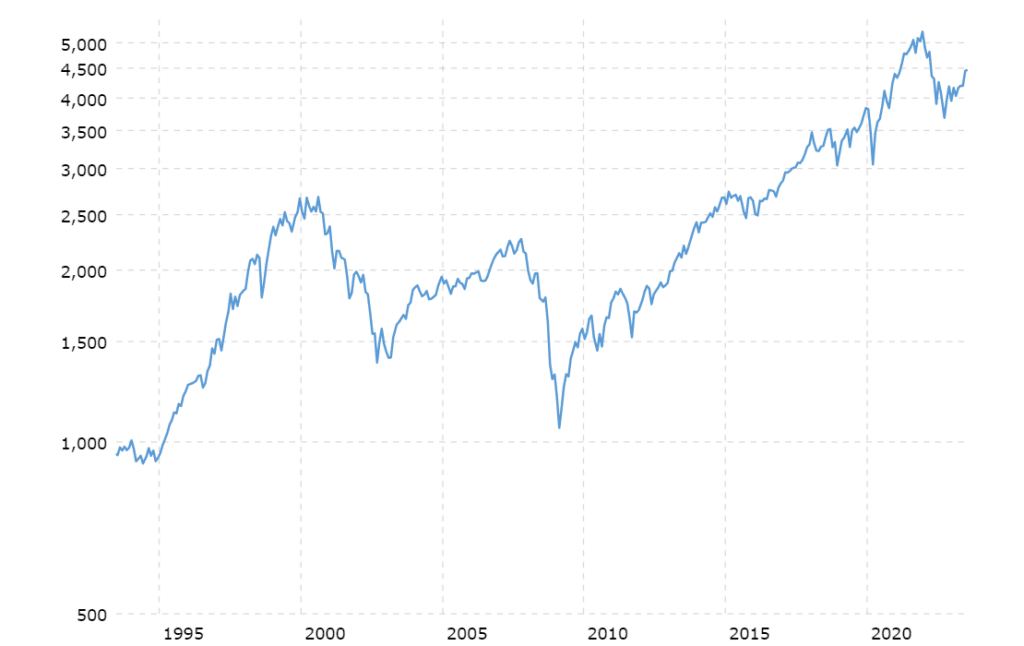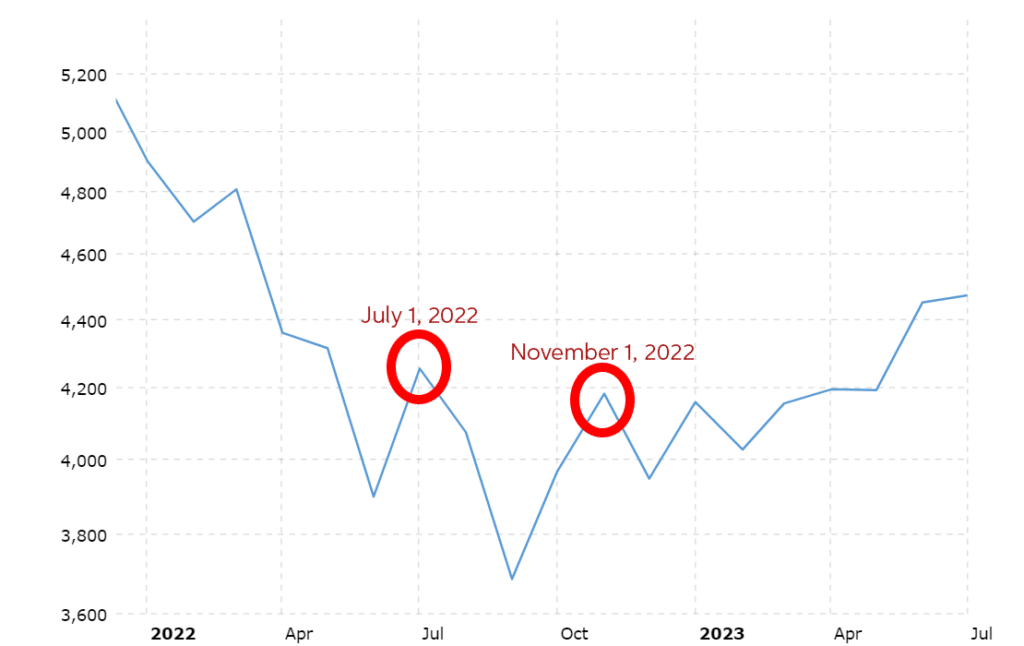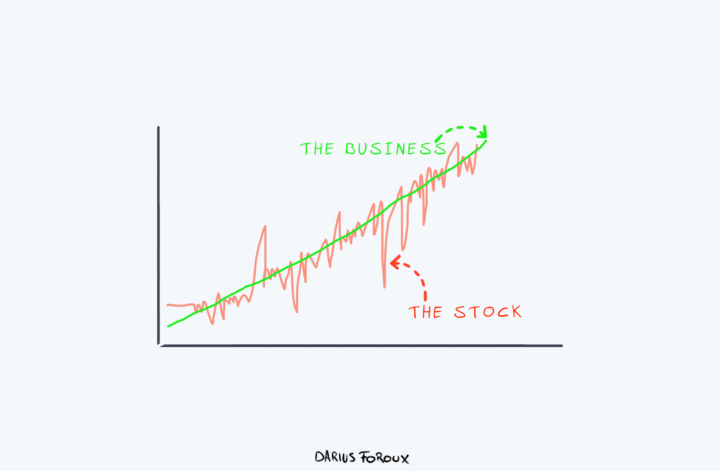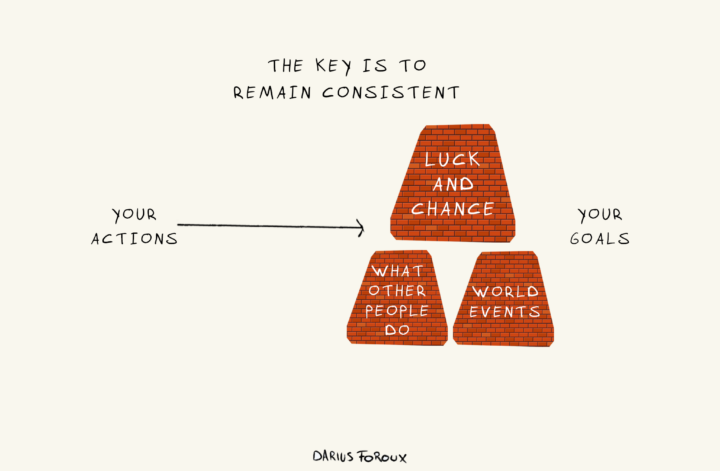When I was in college, I worked as a mutual funds advisor. This was in 2007, before the financial crisis that took place the next year.
I thought I was an investing genius because almost every client I talked to invested with me. So I thought everything I touched would turn into gold.
One year later, my personal stock portfolio was down 60%.
I learned an important lesson: Everyone’s a genius in a bull market. The two years leading up to the 2008 crash were great for many assets. Everything seemed to be going up.
When I lost so much money, I stopped investing in stocks for many years.
Now, if my younger self understood the benefit of long-term investing the way I do know, I could’ve done things differently. Instead of sinking my money into individual stocks I thought I understood — I would’ve invested in an S&P 500 index fund.
Anyway, the point is that there are certain hidden patterns inside the stock market that regular stock market investors are not aware of.
In this article, I’m sharing three of those market patterns. You can leverage them to build long-term wealth.
1. Time and risk have an inverse relationship
When it comes to the broader stock market, what is risky in the short term is relatively safe in the long term. What do I mean by this?
Let’s take a look at the S&P 500 index’s performance. When you observe the graph below, from 2001 to 2006, the market was volatile.

Imagine getting into the stock market in 2001. Your investment would have gone all the way down by 2002. Then, when the market went up briefly in 2002, it could’ve made you feel better. But then it went down again that same year.
At that point, you probably were gripped by the fear of losing all your money.
So let’s say you ended up selling in early 2003. You lost money, but you were relieved you didn’t lose everything.
Then suddenly, the market started to recover and slowly went up. And it goes further up in 2006, beyond your original buying price. You feel regret because you missed out. “If only I held on until 2006!”
Some pundits say: “The market was flat between 2001 and 2006. That’s 5 years when your money did nothing!”
False.
If you KEPT investing, you would’ve made good money. The idea is that you also invest when the market is up. That way, you can maximize your returns on the way up.
That’s hard because it comes with a roller coaster ride of emotions. And you can’t have peace of mind if you’re constantly thinking about whether you should invest or not.
So unless you’re a world-class stock trader, avoid reacting to the flucations of the market.
Compare the timeline above to a 30-year horizon (1993 to 2023).

The 2-year and 5-year market fluctuations wouldn’t matter to you because, in the long run, the broader stock market goes up.
The S&P 500 is a reliable investment because any company that’s not doing well will eventually be removed from the index. Only the best and most profitable companies survive.
As long as the companies in that index keep making more profit you can rely on the long-term growth of the stock market.
2. A business’ short-term stock performance doesn’t dictate its long-term profitability
One of the biggest tech investment management firms is ARK Invest, founded by Cathie Wood.
In 2022, as tech companies experienced a horrendous downtrend, ARK’s main fund went down by 67%.1Source: Reuters Critics began predicting the firm’s downfall. But Wood remained stoic throughout the ordeal.
In a December 2022 tweet, Wood said:2Source: Cathie Wood’s Twitter
“[We are] sacrificing short-term profitability for exponential and highly profitable long-term growth.”
As of this writing, ARK is now back up with a Year-to-Date daily total return of 51.98%.3Source: Yahoo! Finance So if you invested $1,000 in ARK back in December 2022, your investment would’ve grown to $1,519.8 in just 7 months.
Sure, there’s a chance ARK’s performance would go down again. Or suddenly shoot up, like it did in 2020, when it was up 152% (that would turn $1,000 into $2,520).
But those are all short-term moves. Wood invests in tech stocks because she believes that the companies her firm invests in would be profitable in the long term.
The opposite of this strategy is to buy something just because its stock looks profitable now. That’s what happened with a lot of firms that went bust in the dot-com bubble burst of 2001. They bought companies they didn’t understand just because those companies’ stock prices looked enticing during the moment.
Essentially, that’s what investing in a company really means. You’re optimistic about the company’s future and you think it would do well. So you’re willing to bet your hard-earned money on it. Regardless of short-term fluctuations.
3. Consistency beats market timing
Let’s say you decided to invest in July 2022. Then you ignored the market and went on with your life. Sometime later, you receive a bonus from work and you spend it on a mini vacation. Some money was left. And you decided to invest that in the stock market in November 2022.

You ended up buying close to the highs of that year. Now, it’s not very likely you always buy at highs. But if you occasionally invest, you hardly ever buy at the perfect time. The market is either too high or not low enough!
Passive investors don’t want to spend too much time and effort analyzing the “best time” to invest in the market. Instead, the best strategy is to invest consistently. Regardless of the current price.
Here’s how you can do that.
- Ask yourself: How much money can you miss every month? A great aim is $500 a month; increase or decrease that based on your financial situation.
- Then invest that consistently every month in your asset of choice (I personally invest in the Vanguard S&P 500 ETF). Automate it so you don’t even have to think about it.

By investing this way, you simply average yourself into the market. You don’t get the lowest price but also not the highest.
Market volatility should have no effect on long-term investors
95% of finance professionals don’t beat the market consistently over time. The S&P 500 index still does better.4Source: AEI.org
So unless you’re a full-time stock trader, the best way to build wealth in the stock market is to invest passively and have a long-term perspective. You can do that properly if you have a basic understanding of investing.
Warren Buffet said it well:
“Risk comes from not knowing what you are doing.”
Most of us want to spend our time doing work we find meaningful. Which may not be active trading.
By investing passively for the long term, we benefit from the growth in the economy and stock market.




